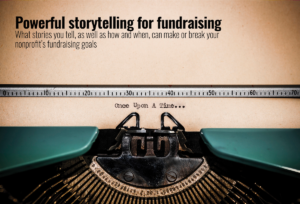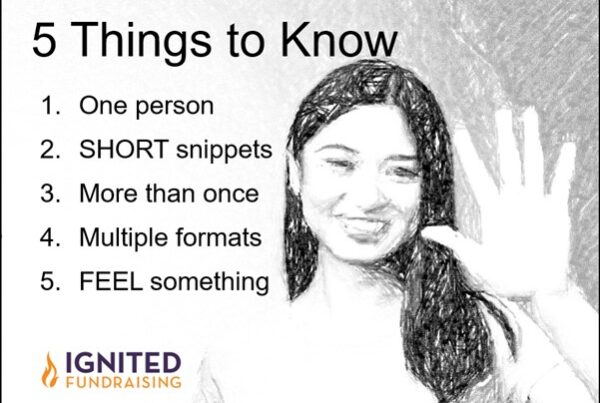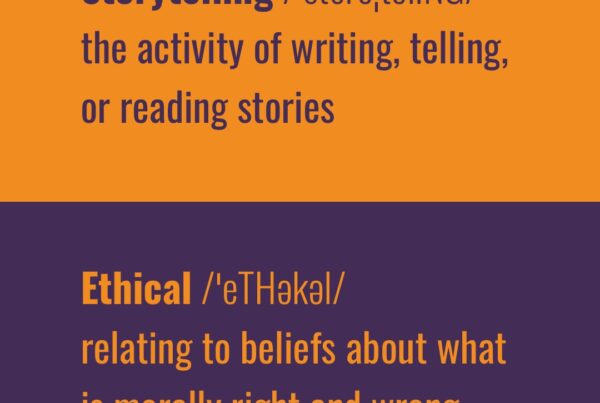Stories you tell at benefit auctions, in your e-newsletter, and in all your nonprofit communications can make or break your fundraising goals. That’s what Erin Shipps, Director of Marketing and Communications for the National Auctioneers Association, wrote for a recent piece in their national magazine: Auctioneer.
 In her article titled “Powerful storytelling for fundraising,” Erin shared her report on the presentation I delivered at the 2021 International Auctioneers Conference & Show.
In her article titled “Powerful storytelling for fundraising,” Erin shared her report on the presentation I delivered at the 2021 International Auctioneers Conference & Show.
While the article Erin wrote is directed at benefit auctioneers, these storytelling insights are applicable to all aspects of raising money for your nonprofit.
Here’s an excerpt of Erin’s article
Why Stories Work
As a benefit auctioneer, you’ve probably told many stories. Stories work because they make us feel. Our brains are wired to think in story. Ultimately, you want an attendee at an event to make the decision to become a donor, but Lori points out that if we cannot feel something, we cannot make a decision. She says everything we do is based on a story we tell ourselves.
“Both our head and our heart have to be engaged in order to make a decision,” she said. “When you’re inviting someone to give $10,000 at that fund-a-need event, we want them to feel like a superhero.”
Lori uses a picture of a pointing man riding on a speeding elephant to illustrate the tension that goes on in our brains. The elephant represents the emotional side of our brain — the love, compassion, and empathy — these are the larger feelings we have. She explains we can get paralyzed and think we’re in control if we’re only thinking in the analytical side of our brains because “knowledge alone doesn’t cause people to take action.”
Benefit auctioneers need to tell stories that get the elephant and the man to work together. But what if you’re working with an organization that’s mission is confusing, or its funding doesn’t make sense, or they don’t know how to talk about themselves? Just help them talk about one person. “Even if they help… keep the water clean… there’s somebody who benefits because the water is clean,” Lori says.
In telling the story of that one person, auctioneers should focus on empathy, not sympathy.
“Sympathy is a distancing emotion, empathy is a connecting emotion,” Lori says. “Our job is to remind folks that they’re the superhero—the person we’re helping impact — not us.”
Read the entire article to find out more about why stories work, how to use storytelling before, during, and after an event, and why storytelling is important year-round.






